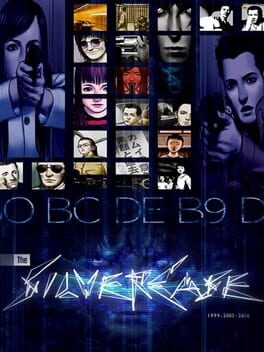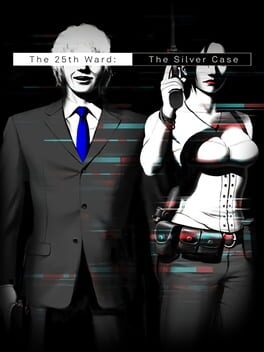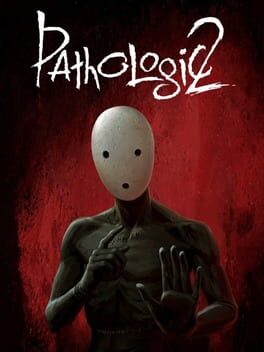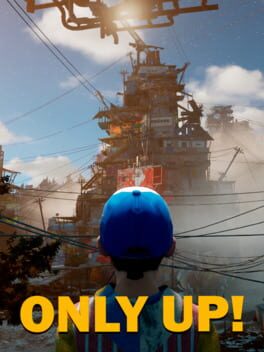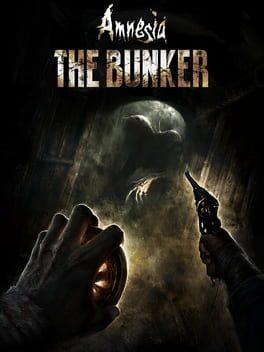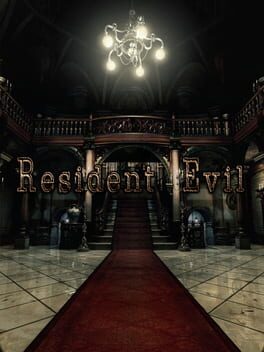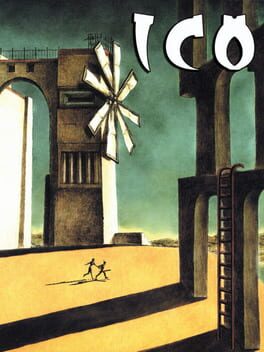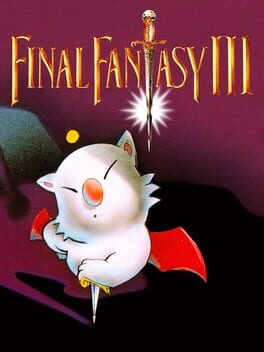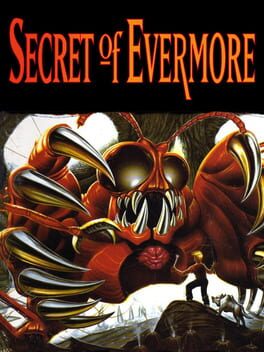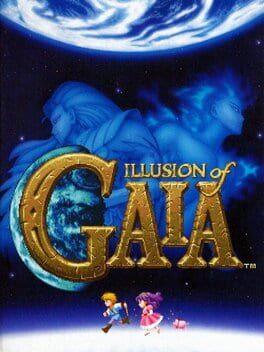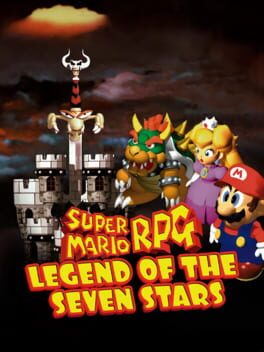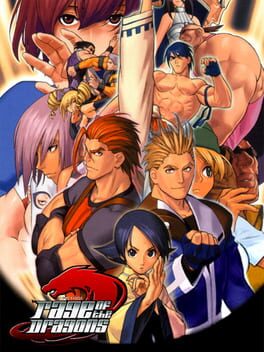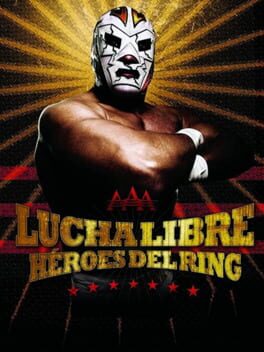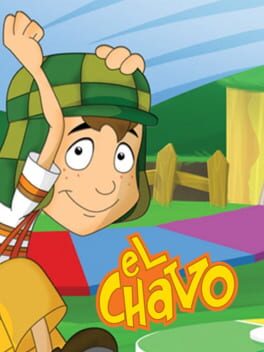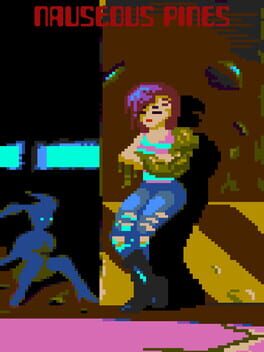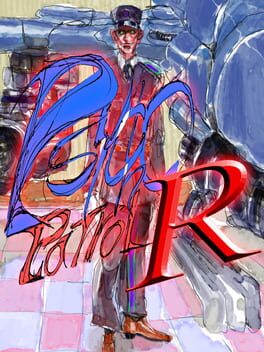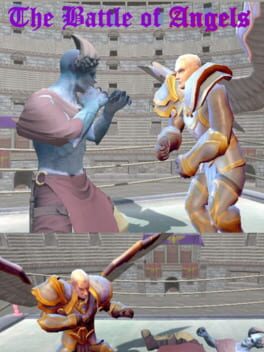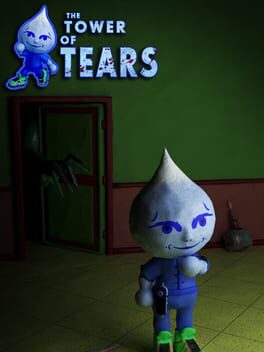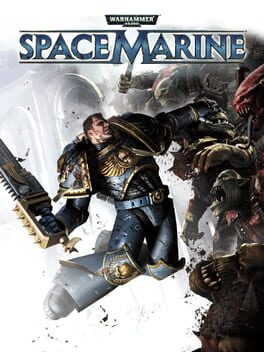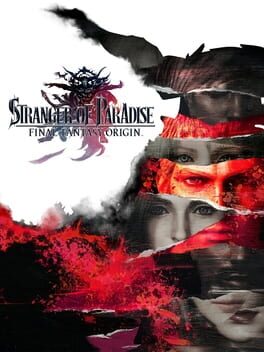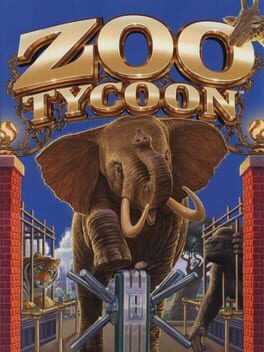Moy
48 reviews liked by Moy
The Silver Case
2016
This review contains spoilers
In a game, let alone continuity, lousy with sharp, confrontational artistic direction, it’s one as simple as the back of the box that continues to work its way through me. It’s the illustration of Kusabi, Sakura, and Kosaka, in particular - Sakura’s exaggerated frown extends out of the image towards you while Kusabi and Kosaka converse around her. If you’ve played the game, you’re aware that this configuration can only happen in the events proceeding the finale (a massive torpedo-spoiler on the back of the box, funny!). By extension, this also means that the illustration is, to whatever degree, a reflection on the status quo after case#5:lifecut, i.e. the chapter of the game where everything boils over, a majority of the Transmitter cast straight up dies, and radical actions by the hands of the remaining cast occur.
I love this illustration for a few reasons - for one, Takashi Miyamoto captures a sense of mundanity so well. In game, you’re never really able to bear witness to a Kusabi at peace in ordinary life, and here he’s beautifully human in his pose - well-earned after his arc through the game. Secondly, through that same focus on the mundane lies a commentary on the dynamics these characters are engaged in. I don’t think it’s much of a stretch to imply that the gender dynamics put forth here can be seen as a disappointing reminder that leaving Kusabi (love ‘em as I do) as the sole surviving veteran of the HCU means that the same bitterness which ostracized Hachisuka, possibly enabling something within to give in to her inevitable death-filing and appearance as Ayame, is likely still in the air. But these observations pale, in my opinion, to the context.
As she continues ascending the 24th Ward’s crime department, after bearing witness to the very operation that almost(/successfully?) doomed her and the player character to a life of artificial personhood, and after witnessing the takedown of the two major antagonists of the game, Nezu and (eventually) Uminosuke, she still frowns at us, the player. Why? I thought danwa was a happy ending.
-
TSC is one of few games I can think of that really eludes simple genre description. Sure, it’s a crime procedural, up until it isn’t. It’s a conspiracy thriller... in spots. It’s Lynchian surrealist dystopia? Alright we’re just gonna say words now, I guess? The only thing that comes to mind for descriptors is, like, slipstream fiction, which, given 25W references seminal proto-Cyberpunk novella The Girl Who Was Plugged In, seems apt enough to settle on. I won’t even evoke the P-word. The one that rhymes with “toast auburn.”
But really, this thought exercise is all just a veiled move to get you to wonder about the limitation of genre fiction as it applies to TSC, and poke at its aspirations. For this to be a standard crime procedural, you’d expect the HCU to... function in some capacity? And conspiracy thriller’s a no-go considering the weight that spirituality and all other intangibles have here, in my opinion. The way I’ll continue from this point to put it is thus: the Mikumo 77 incident, the murder of Kamui by the underworld factions, and the ensuing Shelter Kids policy reverberate through the story on many different frequencies, and the effect of it all is so bleak that only genre convention can make the discussion palatable as fiction. But it doesn’t always cover it: the melancholic, ambling work of Tokio through Placebo, the brain-swelling conflict of information in Transmitter, I think both serve as a reminder that there’s no easy out from underneath the sin of government control. It’s no surprise, I guess, that the symptoms get much, much worse when we return to Kanto in The 25th Ward.
-
Kamuidrome thru danwa (and the equivalent reports from Placebo’s end) are so dizzying and hard to come to terms with that I have literally shaved my head since first playing this game. This is actually true! I have death-filed!
That said, I feel like an essential piece of advice I could give someone who’s in for their first time is to enact judgment on the information based on who and when it’s coming from. This is easy enough in some cases - I think most people are primed from birth to hate pedo-fascist Nakategawa enough to not mind his words. But even fan-favorite Kusabi, for instance... this entire game is a slow fade-to-white for him as he unlearns an entire ideology of criminality equating plague, one he’s enforced so much with violence, not just as a cop, but as a particularly fucked up cop. In the beginning, I wouldn’t blame you for sticking with the competent elder authority of the cast, but if the ending moments of Parade don’t convince you to question the prior chapters, then I don’t know what will. The state of this world can be figured out with relative certainty as long as you keep track of where you are in the game’s web.
Though deeply confusing (& not helped by a localization that I can only describe as “challenging” (no shade to Grasshopper James btw, I can only imagine trying to piece this together 😭)), this game masterfully tiers up its information in a way that makes the trek through the underbelly of the 24th Ward feel so uniquely haunting. While certain aspects (the bench-warming faction war at the batting center comes to mind) do feel a bit bizarre and maybe even underdeveloped as words on a (cyber)page, the thematic tapestry of this game is exceptionally rich, even among other lauded-for-thematic-richness games. I’m a lifelong MGS fan and even I have to admit that after coming to conclusions confident enough to type words about, I think we might be seeing a lunch-eating of unseen proportions.
I love this illustration for a few reasons - for one, Takashi Miyamoto captures a sense of mundanity so well. In game, you’re never really able to bear witness to a Kusabi at peace in ordinary life, and here he’s beautifully human in his pose - well-earned after his arc through the game. Secondly, through that same focus on the mundane lies a commentary on the dynamics these characters are engaged in. I don’t think it’s much of a stretch to imply that the gender dynamics put forth here can be seen as a disappointing reminder that leaving Kusabi (love ‘em as I do) as the sole surviving veteran of the HCU means that the same bitterness which ostracized Hachisuka, possibly enabling something within to give in to her inevitable death-filing and appearance as Ayame, is likely still in the air. But these observations pale, in my opinion, to the context.
As she continues ascending the 24th Ward’s crime department, after bearing witness to the very operation that almost(/successfully?) doomed her and the player character to a life of artificial personhood, and after witnessing the takedown of the two major antagonists of the game, Nezu and (eventually) Uminosuke, she still frowns at us, the player. Why? I thought danwa was a happy ending.
-
TSC is one of few games I can think of that really eludes simple genre description. Sure, it’s a crime procedural, up until it isn’t. It’s a conspiracy thriller... in spots. It’s Lynchian surrealist dystopia? Alright we’re just gonna say words now, I guess? The only thing that comes to mind for descriptors is, like, slipstream fiction, which, given 25W references seminal proto-Cyberpunk novella The Girl Who Was Plugged In, seems apt enough to settle on. I won’t even evoke the P-word. The one that rhymes with “toast auburn.”
But really, this thought exercise is all just a veiled move to get you to wonder about the limitation of genre fiction as it applies to TSC, and poke at its aspirations. For this to be a standard crime procedural, you’d expect the HCU to... function in some capacity? And conspiracy thriller’s a no-go considering the weight that spirituality and all other intangibles have here, in my opinion. The way I’ll continue from this point to put it is thus: the Mikumo 77 incident, the murder of Kamui by the underworld factions, and the ensuing Shelter Kids policy reverberate through the story on many different frequencies, and the effect of it all is so bleak that only genre convention can make the discussion palatable as fiction. But it doesn’t always cover it: the melancholic, ambling work of Tokio through Placebo, the brain-swelling conflict of information in Transmitter, I think both serve as a reminder that there’s no easy out from underneath the sin of government control. It’s no surprise, I guess, that the symptoms get much, much worse when we return to Kanto in The 25th Ward.
-
Kamuidrome thru danwa (and the equivalent reports from Placebo’s end) are so dizzying and hard to come to terms with that I have literally shaved my head since first playing this game. This is actually true! I have death-filed!
That said, I feel like an essential piece of advice I could give someone who’s in for their first time is to enact judgment on the information based on who and when it’s coming from. This is easy enough in some cases - I think most people are primed from birth to hate pedo-fascist Nakategawa enough to not mind his words. But even fan-favorite Kusabi, for instance... this entire game is a slow fade-to-white for him as he unlearns an entire ideology of criminality equating plague, one he’s enforced so much with violence, not just as a cop, but as a particularly fucked up cop. In the beginning, I wouldn’t blame you for sticking with the competent elder authority of the cast, but if the ending moments of Parade don’t convince you to question the prior chapters, then I don’t know what will. The state of this world can be figured out with relative certainty as long as you keep track of where you are in the game’s web.
Though deeply confusing (& not helped by a localization that I can only describe as “challenging” (no shade to Grasshopper James btw, I can only imagine trying to piece this together 😭)), this game masterfully tiers up its information in a way that makes the trek through the underbelly of the 24th Ward feel so uniquely haunting. While certain aspects (the bench-warming faction war at the batting center comes to mind) do feel a bit bizarre and maybe even underdeveloped as words on a (cyber)page, the thematic tapestry of this game is exceptionally rich, even among other lauded-for-thematic-richness games. I’m a lifelong MGS fan and even I have to admit that after coming to conclusions confident enough to type words about, I think we might be seeing a lunch-eating of unseen proportions.
The 25th Ward: The Silver Case is a game about the internet, viewed through the lens of an authoritarian government that monitors its citizens and wipes them out with impunity via their government-sanctioned murderers to maintain the illusion of peace.
It's a game about how even in a "perfect" society where the people up top maintain an iron-grip on every minuet detail of its citizens lives, the biggest threat is the power of the individual and the propagation of ideas.
It's a game about the dehumanizing effects of violence, how those charged with keeping the peace are volatile, reckless goons who kill without remorse and never receive any kind of punishment for it. How killing is innate to the human experience, and how the will to kill resides in all men's hearts.
It's a game about trans-humanism. People turned into biological supercomputers built to retain petabytes of information. People who gain identity on the net. AI's so sophisticated that they become indistinguishable from their creators. People who ascend beyond the biological to become ideals, the purest form of information, unlimited by the notions of life or death.
It's a game about games and the people who play them. The relationship between protagonist and player. The rejection of industry norms. The eschewing of any kind of notion of traditional understanding.
The 25th Ward is a game I have a hard time writing about. It juggles a lot of topics, and yet, it sticks the landing with each and every single one of them in a way that is hauntingly prophetic for what was originally a 2005 flip-phone text-adventure game. It's a bit of a cop-out answer, but after a day or two of writing and rewriting this review, I really do feel it's an experience beyond words. It's a game that resonates even more today in the modern internet age, and it's view of the internet via a fictional social experiment of a city where the line between net and reality is non-existent is an intensely interesting backdrop for the triad of storylines that each explore a facet of this society and how it parallels the modern age.
"Don't depend on the net. Depend on the net. God lives in the net. The net will guide you to all answers and wisdom. Doubt the net. Save the net. Kill the net."
It's a game about how even in a "perfect" society where the people up top maintain an iron-grip on every minuet detail of its citizens lives, the biggest threat is the power of the individual and the propagation of ideas.
It's a game about the dehumanizing effects of violence, how those charged with keeping the peace are volatile, reckless goons who kill without remorse and never receive any kind of punishment for it. How killing is innate to the human experience, and how the will to kill resides in all men's hearts.
It's a game about trans-humanism. People turned into biological supercomputers built to retain petabytes of information. People who gain identity on the net. AI's so sophisticated that they become indistinguishable from their creators. People who ascend beyond the biological to become ideals, the purest form of information, unlimited by the notions of life or death.
It's a game about games and the people who play them. The relationship between protagonist and player. The rejection of industry norms. The eschewing of any kind of notion of traditional understanding.
The 25th Ward is a game I have a hard time writing about. It juggles a lot of topics, and yet, it sticks the landing with each and every single one of them in a way that is hauntingly prophetic for what was originally a 2005 flip-phone text-adventure game. It's a bit of a cop-out answer, but after a day or two of writing and rewriting this review, I really do feel it's an experience beyond words. It's a game that resonates even more today in the modern internet age, and it's view of the internet via a fictional social experiment of a city where the line between net and reality is non-existent is an intensely interesting backdrop for the triad of storylines that each explore a facet of this society and how it parallels the modern age.
"Don't depend on the net. Depend on the net. God lives in the net. The net will guide you to all answers and wisdom. Doubt the net. Save the net. Kill the net."
NieR: Automata
2017
Dismembering bodies, dismembering reality.
What i liked most from the first Nier was Taro's ability to play with what constitutes a being, and how bodies are transformed several times taking different forms. He has the ability to twist his stories and his characters, so that the confusion that arises from all the endings and new perspectives is not only to show the futility of conflict, but that the real conflict is upon our own bodies.
Nier Automata takes it even further. The only bodies that remain in the world are machine lifeforms. They can be replaced with spareparts, the androids are different from alien machines, but machines can fuse and give birth to androids, and androids are formed with machines' nucleus, and then everyone fights each other, while searching for a human soul.
They build community, they are greedy, they need connection, they need love, they need solitude. They feel. And their bodies keep twisting and turning and breaking and reconstructing and deconstructing and nothing remains the same anymore, because our bodies are in constant death and rebirth as time passes, and we meet new people and they change us and we change them in return. Such is the pain and grace of living.
What i liked most from the first Nier was Taro's ability to play with what constitutes a being, and how bodies are transformed several times taking different forms. He has the ability to twist his stories and his characters, so that the confusion that arises from all the endings and new perspectives is not only to show the futility of conflict, but that the real conflict is upon our own bodies.
Nier Automata takes it even further. The only bodies that remain in the world are machine lifeforms. They can be replaced with spareparts, the androids are different from alien machines, but machines can fuse and give birth to androids, and androids are formed with machines' nucleus, and then everyone fights each other, while searching for a human soul.
They build community, they are greedy, they need connection, they need love, they need solitude. They feel. And their bodies keep twisting and turning and breaking and reconstructing and deconstructing and nothing remains the same anymore, because our bodies are in constant death and rebirth as time passes, and we meet new people and they change us and we change them in return. Such is the pain and grace of living.
Pathologic 2
2019
Pathologic 2 abre con un llamado de nuestro padre, Isidor, pidiendonos que regresemos al pueblo en el que residíamos anter de irnos a estudiar medicina a la ciudad. Cuando llegamos, nos enteramos que fue asesinado y nos culpan por este hecho. Las primeras horas de contacto con el juego son duras y formativas: no podemos caminar por casi ninguna zona del pueblo sin ir a escondidas, apenas entendemos cómo funciona cada indicador de salud, parece que en cualquier momento nos vamos a morir de cansancio y no tenemos siquiera lugar en el que caer muertos.
Luego de que se disipen las sospechas sobre nuestro personaje, acudimos al entierro de Isidor con la noticia de que la tierra no lo está aceptando, que cada vez que intentan enterrarlo su cuerpo aflora. Esto supuestamente se debe a que todavía le quedaban asuntos pendientes en el pueblo. Así que nosotros, sin saber siquiera sobre qué implica ese legado específicamente, tomamos la posta de nuestro padre y el juego da inicio a una cuenta de doce días que tenemos para completar su misión, sea cual sea.
Pathologic 2 es cien por cien consciente sobre el nulo peso de las decisiones del jugador sobre lo que acontece, hace explícito esto mismo a través de la figura del director. Esto parece ser una forma de respuesta a muchos juegos de rol de su época (de la época del original) que prometían un mundo único para cada jugador, donde cada decisión era un impacto más o menos visible, más o menos grande sobre nuestro alrededor. La justificación para ese estilo de diseño parecía ser que el acto consciente de estar jugando algo que nadie más hará, por elección de variables, imprimirían en el jugador esa sensación de unicidad y por lo tanto harían de la aventura algo más personal. Pathologic 2 cree en la importancia de lo personal, pero no en el cómo llegan esos otros juegos, y la herramienta que utiliza en la escena del entierro es una que se repetirá muchas veces a lo largo del juego: la desorientación. Señalar una gran cantidad de caminos no hace del que elijamos algo propio. Pero señalar un puñado de objetivos y no decirnos cómo llegar (ni siquiera obligarnos a elegir alguno) hace que la senda que tomemos sí se sienta pertenecida.
Y estoy de acuerdo con el juego. Entre estar al borde de la muerte todo el tiempo y que no hay dedo marcando un camino para zafar, cada victoria o derrota cobra mayor peso. Mi problema es que nada tiene el suficiente peso. Pathologic 2 se siente seco. Como si le faltara sangre. Casi toda interacción está reducida a menus. El tiempo es el componente que más logra formar una sensación espacial, por lo escaso que resulta (a pesar de ser un poco largo), por lo que cuesta moverse por el pueblo y por todas las "misiones" que terminamos dejando detrás. Pero tras varias horas, nos damos cuenta que no importa perder el tiempo porque el mismo juego nos señala que todo está dirigido, y lo que hacemos es sobrevivir y salvar a las personas que mejor nos caigan, esperando al final.
Y hablando de personas, éstas son lo que más redime al juego. Ellas también están ahí para desorientar al jugador, tratándonos de tontos o siendo obtusos/poco claros a la hora de hablar. Cada conversación, por su nivel de escritura y por la forma en la que es presentada, con la cara en primer plano, va dandoles una identidad, credibilidad, interés y peso al pueblo que luego, lamentablemente, no es sostenido por el propio juego cuando algunas de ellas se pierden. Cuando, inevitablemente, alguna muere, la vida sigue, el pueblo y la gente no reconoce la muerte, lo que en principio se siente como un aspecto triste de la vida, donde cada uno continúa como y se agarra de lo que puede, pero no puedo evitar pensar que simplemente, por la premisa presentada, ninguna tuvo jamás ningún peso sobre nada. Estaban ahí, para que sean salvados o no. Para darnos una conversación o un hecho o una idea... o no. A pesar de todo lo que Pathologic parece obviar al jugador, somos, necesariamente, el único componente requerido en el pueblo para que siga andando. Los habitantes terminan siendo reducidos a una ruleta donde nosotros podemos mejorar las chances, terminan siendo elementos con los que canejar recursos (donde, para colmo, repiten excesivamente el diseño visual, quebrando la sensación de realidad que quiere dar) y así sobrevivir. Los habitantes terminan existiendo para el jugador.
Generalmente trato de mantenerme escueto en estos textos. Cuando no hago un chiste malo, intento hacer lo que digo en mi perfil: "resumir lo mayor posible lo que pienso/siento de cada juego". Pero con Pathologic 2 es dificil. Lo creo un juego más que interesante con el que tener una conversación, un replanteamiento de nuestras ideas. Pero, cuando toca evaluar lo que el propio juego expone, siento que no aguanta los trapos tanto como pretende. El problema es que no sé cómo podría hacerlo. Me es fácil darle la razón en su filosofía y me es difícil culparlo cuando no consigue demostrarla. No sé si me gusta o no, verdaderamente. Tiene sus momentos fuertes. Tiene sus momentos bajos. Sigue en mi memoria tras más de un mes. Pero sí lo creo algo recomendable, aunque sea solo para que sufras un poco, desgraciado, por si leyendo este texto de mierda no fue suficiente. En serio, qué hacés leyendo esto?
Luego de que se disipen las sospechas sobre nuestro personaje, acudimos al entierro de Isidor con la noticia de que la tierra no lo está aceptando, que cada vez que intentan enterrarlo su cuerpo aflora. Esto supuestamente se debe a que todavía le quedaban asuntos pendientes en el pueblo. Así que nosotros, sin saber siquiera sobre qué implica ese legado específicamente, tomamos la posta de nuestro padre y el juego da inicio a una cuenta de doce días que tenemos para completar su misión, sea cual sea.
Pathologic 2 es cien por cien consciente sobre el nulo peso de las decisiones del jugador sobre lo que acontece, hace explícito esto mismo a través de la figura del director. Esto parece ser una forma de respuesta a muchos juegos de rol de su época (de la época del original) que prometían un mundo único para cada jugador, donde cada decisión era un impacto más o menos visible, más o menos grande sobre nuestro alrededor. La justificación para ese estilo de diseño parecía ser que el acto consciente de estar jugando algo que nadie más hará, por elección de variables, imprimirían en el jugador esa sensación de unicidad y por lo tanto harían de la aventura algo más personal. Pathologic 2 cree en la importancia de lo personal, pero no en el cómo llegan esos otros juegos, y la herramienta que utiliza en la escena del entierro es una que se repetirá muchas veces a lo largo del juego: la desorientación. Señalar una gran cantidad de caminos no hace del que elijamos algo propio. Pero señalar un puñado de objetivos y no decirnos cómo llegar (ni siquiera obligarnos a elegir alguno) hace que la senda que tomemos sí se sienta pertenecida.
Y estoy de acuerdo con el juego. Entre estar al borde de la muerte todo el tiempo y que no hay dedo marcando un camino para zafar, cada victoria o derrota cobra mayor peso. Mi problema es que nada tiene el suficiente peso. Pathologic 2 se siente seco. Como si le faltara sangre. Casi toda interacción está reducida a menus. El tiempo es el componente que más logra formar una sensación espacial, por lo escaso que resulta (a pesar de ser un poco largo), por lo que cuesta moverse por el pueblo y por todas las "misiones" que terminamos dejando detrás. Pero tras varias horas, nos damos cuenta que no importa perder el tiempo porque el mismo juego nos señala que todo está dirigido, y lo que hacemos es sobrevivir y salvar a las personas que mejor nos caigan, esperando al final.
Y hablando de personas, éstas son lo que más redime al juego. Ellas también están ahí para desorientar al jugador, tratándonos de tontos o siendo obtusos/poco claros a la hora de hablar. Cada conversación, por su nivel de escritura y por la forma en la que es presentada, con la cara en primer plano, va dandoles una identidad, credibilidad, interés y peso al pueblo que luego, lamentablemente, no es sostenido por el propio juego cuando algunas de ellas se pierden. Cuando, inevitablemente, alguna muere, la vida sigue, el pueblo y la gente no reconoce la muerte, lo que en principio se siente como un aspecto triste de la vida, donde cada uno continúa como y se agarra de lo que puede, pero no puedo evitar pensar que simplemente, por la premisa presentada, ninguna tuvo jamás ningún peso sobre nada. Estaban ahí, para que sean salvados o no. Para darnos una conversación o un hecho o una idea... o no. A pesar de todo lo que Pathologic parece obviar al jugador, somos, necesariamente, el único componente requerido en el pueblo para que siga andando. Los habitantes terminan siendo reducidos a una ruleta donde nosotros podemos mejorar las chances, terminan siendo elementos con los que canejar recursos (donde, para colmo, repiten excesivamente el diseño visual, quebrando la sensación de realidad que quiere dar) y así sobrevivir. Los habitantes terminan existiendo para el jugador.
Generalmente trato de mantenerme escueto en estos textos. Cuando no hago un chiste malo, intento hacer lo que digo en mi perfil: "resumir lo mayor posible lo que pienso/siento de cada juego". Pero con Pathologic 2 es dificil. Lo creo un juego más que interesante con el que tener una conversación, un replanteamiento de nuestras ideas. Pero, cuando toca evaluar lo que el propio juego expone, siento que no aguanta los trapos tanto como pretende. El problema es que no sé cómo podría hacerlo. Me es fácil darle la razón en su filosofía y me es difícil culparlo cuando no consigue demostrarla. No sé si me gusta o no, verdaderamente. Tiene sus momentos fuertes. Tiene sus momentos bajos. Sigue en mi memoria tras más de un mes. Pero sí lo creo algo recomendable, aunque sea solo para que sufras un poco, desgraciado, por si leyendo este texto de mierda no fue suficiente. En serio, qué hacés leyendo esto?
Only Up!
2023
It may look like a cheap move to compare Only Up to Getting Over It, in which I commit the error of asking for a game to be something that it isn't. I think it’s interesting to compare where it comes from (as the influence is clear, and even explicit) just as it would be fair to compare Getting Over It to Sexy Hiking.
What Bennet Foddy saw in its inspiration was that the seed towards new ways of conception could be found in places that embraced the unconventional, that didn't care, or even preferred, to be "janky", as it allowed for the freedom to create its own discourse without having to answer to any expectations. His mountain of "digital junk" in the form of collected free assets wasn't (just) an ironic commentary on how everything online is just waste nowadays (I know there are some connotations about it, but they are more bridges towards other more interesting ideas). What was valuable in its collage of a map was to see through all that worthless collection and carefully select and position everything in a way that found a new meaning. To appreciate the shape of a lamp through the brutality of the hammer by moving it as carefully as an artist's brush.
Only Up seems to accentuate the collage of jank. Now it's a longer, fully 3D map, the companion voice is automated and even the movement itself is, or looks like, a preset moveset from any modern 3D engine. In this movement that clings into collisions the same no matter the shape, the objects matter no more, a lamp is just another box of a different size. The length of the game is less defined by the particular focus on the detail and more on repeating mechanical and repetitive motions, continuing to believe in a tendency where quantity beats quality, or at least carefulness. Where Getting Over It found meaning in its assets by making them an integral part of its revolutionary new take on platformers, Only Up only gets it in an even weaker comment of modern waste and a shield of irony.
If you think that the movement is uninspired, the response is that it's a purposeful ironic comment. If the lack of ideas to make an interesting platformer keeps appearing again and again, it isn’t a signal that there was no purpose to make a good game, but another ironic comment.
Getting Over It found value in everything through the delicate strokes of the hammer that moved through its mountain. Only Up believes that nothing of value can be done, we are at a point of no return and movement cannot be conceived as something interesting, it's just a standard to be mocked about. The worst part is that the wave of infinite clones is already feeding its empty argument.
What Bennet Foddy saw in its inspiration was that the seed towards new ways of conception could be found in places that embraced the unconventional, that didn't care, or even preferred, to be "janky", as it allowed for the freedom to create its own discourse without having to answer to any expectations. His mountain of "digital junk" in the form of collected free assets wasn't (just) an ironic commentary on how everything online is just waste nowadays (I know there are some connotations about it, but they are more bridges towards other more interesting ideas). What was valuable in its collage of a map was to see through all that worthless collection and carefully select and position everything in a way that found a new meaning. To appreciate the shape of a lamp through the brutality of the hammer by moving it as carefully as an artist's brush.
Only Up seems to accentuate the collage of jank. Now it's a longer, fully 3D map, the companion voice is automated and even the movement itself is, or looks like, a preset moveset from any modern 3D engine. In this movement that clings into collisions the same no matter the shape, the objects matter no more, a lamp is just another box of a different size. The length of the game is less defined by the particular focus on the detail and more on repeating mechanical and repetitive motions, continuing to believe in a tendency where quantity beats quality, or at least carefulness. Where Getting Over It found meaning in its assets by making them an integral part of its revolutionary new take on platformers, Only Up only gets it in an even weaker comment of modern waste and a shield of irony.
If you think that the movement is uninspired, the response is that it's a purposeful ironic comment. If the lack of ideas to make an interesting platformer keeps appearing again and again, it isn’t a signal that there was no purpose to make a good game, but another ironic comment.
Getting Over It found value in everything through the delicate strokes of the hammer that moved through its mountain. Only Up believes that nothing of value can be done, we are at a point of no return and movement cannot be conceived as something interesting, it's just a standard to be mocked about. The worst part is that the wave of infinite clones is already feeding its empty argument.
Disco Elysium is undeniably one of the most concentrated, and achieved, works to focus on individual introspection on the most granular level. It’s clear about it from the get go, it begins with a typical RPG character builder, then an inner dialogue, with the background of a pitch black screen, then the first steps in the game in a cramped hotel room, where the inner voices will be your first companions, and finally the first long dialogue tree being established with, of course, a mirror. There is an important detail revealed in this first contact, the main character doesn’t remember anything, not even his own name. If there is not a memory, not a past, only one thing remains, the current self. The absence and rediscovery of identity flow in a perpetual conversation from our protagonist to the whole of Martinaise and back.
Though its RPG abstractions may seem childish at first (and they are, as in imaginative), the game creates a system to represent the particular human being through their various voices/traits. It zooms into what seemed to be already atomic and divides again. It may look like a total misunderstanding of something that is impossible to classify, let alone gamify, though, the brilliance is in being unashamed of its decision, of using the system as a means to construct the being, and not as a goal.
The presence of a layer of humor helps to ease its mechanical premise, and it won’t take long to be delighted with the flavor that each voice has. This same humor helps to introduce its devastated world. Disco Elysium’s premise is an easy subject to throw in the misery well, yet the total opposite occurs. The at first chaotic mind of our detective turns out to be the perfect lenses through which to discover an hypersensorial world where each corner and conversation is a suggestive sign of life, past or present, still palpable regardless. As our job is that of a detective, our instinct will be of adventuring, exploring and, of course, talking. The conversations are soon revealed as labyrinths where each character traces a glimpse of their own world. A world so present and so alive in so many people that their existence and their connection end up weaving the tapestry that is the true human life of seemingly dead Martinaise.
The game is insistent on searching for life in the home of death. A commercial mall where no store survives becomes the place for a woman to give birth to roleplaying dice, even if the roleplayers and game makers are gone too. An abandoned church becomes the home of the night raves of the youth that wants to connect with the ethereal in their own terms. The human vitalism is evident, the melancholy of Disco Elysium is noticing that the unstoppable external interests to exploit Martinaise inevitably permeate every one of these lives.
After life -- death;
After death -- life again.
Though its RPG abstractions may seem childish at first (and they are, as in imaginative), the game creates a system to represent the particular human being through their various voices/traits. It zooms into what seemed to be already atomic and divides again. It may look like a total misunderstanding of something that is impossible to classify, let alone gamify, though, the brilliance is in being unashamed of its decision, of using the system as a means to construct the being, and not as a goal.
The presence of a layer of humor helps to ease its mechanical premise, and it won’t take long to be delighted with the flavor that each voice has. This same humor helps to introduce its devastated world. Disco Elysium’s premise is an easy subject to throw in the misery well, yet the total opposite occurs. The at first chaotic mind of our detective turns out to be the perfect lenses through which to discover an hypersensorial world where each corner and conversation is a suggestive sign of life, past or present, still palpable regardless. As our job is that of a detective, our instinct will be of adventuring, exploring and, of course, talking. The conversations are soon revealed as labyrinths where each character traces a glimpse of their own world. A world so present and so alive in so many people that their existence and their connection end up weaving the tapestry that is the true human life of seemingly dead Martinaise.
The game is insistent on searching for life in the home of death. A commercial mall where no store survives becomes the place for a woman to give birth to roleplaying dice, even if the roleplayers and game makers are gone too. An abandoned church becomes the home of the night raves of the youth that wants to connect with the ethereal in their own terms. The human vitalism is evident, the melancholy of Disco Elysium is noticing that the unstoppable external interests to exploit Martinaise inevitably permeate every one of these lives.
After life -- death;
After death -- life again.
Amnesia: The Bunker
2023
It's okay. Played through for free on game pass and I absolutely would not recommend buying a game this short for $25.
The Bunker is an interesting evolution on traditional Amnesia gameplay, but suffers a bit from being too easy. The opening hour of the game is pretty tense, but once you get your feet under you, figure out how stupid the monster is, and learn the rough layout of the bunker, there's very little challenge in the game. Once I got a few resources I basically just rolled through the entire game completely unthreatened and with very minimal tension.
Still, I think it holds up for its 3-4 hour runtime, and if you're getting it for basically free off game pass then this is well worth playing.
The Bunker is an interesting evolution on traditional Amnesia gameplay, but suffers a bit from being too easy. The opening hour of the game is pretty tense, but once you get your feet under you, figure out how stupid the monster is, and learn the rough layout of the bunker, there's very little challenge in the game. Once I got a few resources I basically just rolled through the entire game completely unthreatened and with very minimal tension.
Still, I think it holds up for its 3-4 hour runtime, and if you're getting it for basically free off game pass then this is well worth playing.
Amnesia: The Bunker
2023
Well, this game is definitely better than Rebirth. At least more gameplay, more tension, we're stuck in a single location such as closed bunker and you can really see how different it is from Amnesia: Rebirth. For another example the fear of death makes sense again because you return to your last savepoint. You can't survive death and definitely can't skip the hard part of the level automatically like it was in Rebirth. And still everyone is happy with the game atmosphere... but it only works for the first 30 or 40 minutes until you understand what to do to avoid monster as much as possible. There's a generator and once it's on there's light everywhere where you turned the switch on. And I was NEVER out of gas for generator, especially after I found the gasoline barrel that you can use to fill up empty bottles with fuel. Why do bottles always contain more gas than ~80% of fuel cans, by the way? For a moment I thought that the game will force me to always turn some unused light switches off to avoid overloading the generator, but no. The light makes the game easier because when it's on the beast don't walk around just for nothing. You should make loud noise for it to come, like break the door, blow up something or tease monster intentionally by winding up your torch long enough. Sometimes you need to make some noise, but you have nothing to fear as long as you know how to get out of the room quickly or have a place to hide in the next room. So the game became not-so-scary horror with Metroidvania elements pretty quick. The story... Well, it's not the global type of story, it doesn't explain much about Amnesia universe, it's more about how a group of soldiers faced the dark forces from Amnesia universe when they were at war. I find it more interesting than Rebirth story, but still the only way to get story parts is to read letters and come on, this storytelling method is so old, ancient as... well, me. Wish they find better ways to tell the plot in their next games. Even Rebirth had more letters-with-voicovers and here we can only hear VOs on Henry's and Lambert's letters. Even though I like how the game gives us hints on monster identity without giving the straight answer, though the answer might be clear for those who played previous Amnesia games. But the worst part - there are hints on loading screens that tell you to make experiments and try new ways of solving the puzzles and stuff. But the phrase "several ways of solving the puzzle" mostly just means that you can crash wooden doors with either a brick, shotgun or an explosion and 2 of these methods are shown in the training section. There is no room for experiments though I'd really like to make them. You can't blow up metal door with red barrel though you can get an achievement saying you DID blew it up. You can't do a thing with a screwed up vent grill rather than unscrew it. No damaging it with a brick, no blowing up - just unscrew. You can't hit a button with a shot though sometimes it seems like you can. And it's also pretty much pointless to shoot monster because you just stutter him for several second, but you also lose a gold-weight ammo that can be (and I'd say should be) used for solving puzzles, shooting barrels and locks for example. And finally this game is sooooo short! In-game interface told me I finished it in less than 2 hours and I think this is quite correct, except for the pause time. It also has one ending and no new content to see on second playthrough. In the end it might worth it to play this game, but definetily not replay it and I'd say go for the first two titles if you want better horror and try this one if you're looking for something a bit different, but still universe-related.
Resident Evil
2014
For all the survival horror that I've dabbled with over the past few years, this is the title that made me the most cognizant of the "survival" aspect. It’s this elaborate balancing act of juggling every limited resource at your disposal: ammo for bosses and enemies, kerosene to burn necessary corpses after downing zombies to secure routes, health items as fail safes, ink ribbons to save when deemed necessary, and most importantly, inventory space to minimize backtracking with the bare minimum (knowing what you’re likely to use up as you progress so you have enough room to forage). What’s key to all of this is that it’s often worthwhile not downing zombies at all to not only conserve ammo, but also prevent the possibility of a more dangerous Crimson Head when kerosene is not only limited but requires further planning for refueling and additional inventory slots (lighter + flask). It’s punishing, but in the best way possible; damage and death become instruments of observation to properly plan out backtracking and understanding exactly what goes where. Perhaps my favorite example of this in action was abusing the various doors in a room connecting the shed corridor with a safe room; by quickly going in and out of the entrances, I could not only reset a Hunter’s awareness and spawn, but also place myself in a position where I could immediately run at the Hunter to proc an attack and slip past every time. It certainly helps, regardless, that there’s plenty of leeway for careful experimentation, thanks to all of the scattered health items about the mansion (granted, often requiring careful planning to optimize grounded herbs in rooms and keeping enough inventory space open for trips). It’s also fairly firm at setting its boundaries by telegraphing enemy placement far in advance with rattling doors/windows to signify enemy shifts, background moaning when a zombie is present in the room, and even environmental noises like crunching fallen glass to make up for the lack of vision with fixed camera angles.
That doesn’t mean, however, that the horror has been neglected. If anything, I found this game far more unsettling beyond sudden surprises. It’s not so much the fear of the unexpected, but rather, the lingering fear of waiting for the other shoe to drop while you’re expecting the unexpected. They're scripted events, sure, but they're well disguised thanks to every room often acting as its own isolated microcosm without the presence of the protagonist (not to mention that it's pretty easy to get caught up in the middle of things and forget about each individual room, which makes it all the more viscerally shocking) and there's still a feeling of player control with careful planning and routing. This fits perfectly alongside its core philosophy of risk versus reward, the existential dread of having to backtrack through several zombie infested corridors when you realize you forgot an inventory key and having to constantly and deliberately throw yourself into tight situations just to save another trip across the map. It’s what makes this such an ideal speedrunning game: not necessarily because of satisfying movement or combat, but because Resident Evil is really a game about time management. Every second wasted tromping through another passageway is time that could contribute to a zombie reviving as a Crimson Head or another second spent replaying if you’re not willing to use that extra ink ribbon. The primal fear arising from guaranteed safety as a fleeting resource lends perfectly to the need for optimization; in that sense, pressuring players into constantly checking the map to avoid confrontations and getting lost goes hand in hand with spending as little time as possible, for nothing is more terrifying than having to rewind the simulations in your head for another go.
I can’t help but feel that every detail of this game was thought down to the bone, even the original tank control scheme. That’s right, I’m actually defending tank controls for once in my life… how the turns have tabled. Dodging enemies can seem tougher, but most are conveniently placed near corners and more open areas to give you the room necessary to dodge with a backstep/quick burst to the side if you’re willing to wait and bait committal attacks. More importantly, using tank controls lets you maintain your direction and momentum while running through different camera angles of a room. With alternate controls, you most likely have to hold down the joystick to maintain velocity and upon a new camera angle, will have to quickly retap to keep the intended direction with each new angle. This becomes paramount in tighter chase sequences, where even slight moments of stagnation can lead to damage/death, as well as one timed puzzle where I had to press a button and then quickly run through several fixed angles to get into position to push a statue. In addition, I found it rather difficult to reliably walk (as opposed to running full-time) with alternate controls over tank controls, which can absolutely backfire during an end-game sequence where running for a prolonged period can trigger an explosion during nitro delivery. Therefore, the circumstances created by the environment not only are doable with tank controls, but in fact necessitate the usage of such controls.
Everything just comes together as this tightly designed package. Puzzles have fairly evident tells and can be figured out with careful observation of the surroundings while facilitating the inventory scramble that plays so heavily to the game’s survival elements. The lore never feels overbearing or excessive, and does a great job weaving in hints for crafting approaches and figuring out exactly what has to be accomplished. There’s never an explicit timer on screen outside of the final ending segment, yet the game is great at creating circumstances where you’re forced to make decisions on the fly from environmental stressors and considering the mansion not just on a per room basis, but as a sum of its parts. I genuinely don’t think I have any gripes; it was more than happy to beat me down, but understanding its parameters to scale up against its challenges was an incredibly fulfilling experience. I’d damn well say that REmake is the most focused and cohesive survival horror experience I’ve ever played. Not just a perfect remake, but perhaps a practically perfect game.
That doesn’t mean, however, that the horror has been neglected. If anything, I found this game far more unsettling beyond sudden surprises. It’s not so much the fear of the unexpected, but rather, the lingering fear of waiting for the other shoe to drop while you’re expecting the unexpected. They're scripted events, sure, but they're well disguised thanks to every room often acting as its own isolated microcosm without the presence of the protagonist (not to mention that it's pretty easy to get caught up in the middle of things and forget about each individual room, which makes it all the more viscerally shocking) and there's still a feeling of player control with careful planning and routing. This fits perfectly alongside its core philosophy of risk versus reward, the existential dread of having to backtrack through several zombie infested corridors when you realize you forgot an inventory key and having to constantly and deliberately throw yourself into tight situations just to save another trip across the map. It’s what makes this such an ideal speedrunning game: not necessarily because of satisfying movement or combat, but because Resident Evil is really a game about time management. Every second wasted tromping through another passageway is time that could contribute to a zombie reviving as a Crimson Head or another second spent replaying if you’re not willing to use that extra ink ribbon. The primal fear arising from guaranteed safety as a fleeting resource lends perfectly to the need for optimization; in that sense, pressuring players into constantly checking the map to avoid confrontations and getting lost goes hand in hand with spending as little time as possible, for nothing is more terrifying than having to rewind the simulations in your head for another go.
I can’t help but feel that every detail of this game was thought down to the bone, even the original tank control scheme. That’s right, I’m actually defending tank controls for once in my life… how the turns have tabled. Dodging enemies can seem tougher, but most are conveniently placed near corners and more open areas to give you the room necessary to dodge with a backstep/quick burst to the side if you’re willing to wait and bait committal attacks. More importantly, using tank controls lets you maintain your direction and momentum while running through different camera angles of a room. With alternate controls, you most likely have to hold down the joystick to maintain velocity and upon a new camera angle, will have to quickly retap to keep the intended direction with each new angle. This becomes paramount in tighter chase sequences, where even slight moments of stagnation can lead to damage/death, as well as one timed puzzle where I had to press a button and then quickly run through several fixed angles to get into position to push a statue. In addition, I found it rather difficult to reliably walk (as opposed to running full-time) with alternate controls over tank controls, which can absolutely backfire during an end-game sequence where running for a prolonged period can trigger an explosion during nitro delivery. Therefore, the circumstances created by the environment not only are doable with tank controls, but in fact necessitate the usage of such controls.
Everything just comes together as this tightly designed package. Puzzles have fairly evident tells and can be figured out with careful observation of the surroundings while facilitating the inventory scramble that plays so heavily to the game’s survival elements. The lore never feels overbearing or excessive, and does a great job weaving in hints for crafting approaches and figuring out exactly what has to be accomplished. There’s never an explicit timer on screen outside of the final ending segment, yet the game is great at creating circumstances where you’re forced to make decisions on the fly from environmental stressors and considering the mansion not just on a per room basis, but as a sum of its parts. I genuinely don’t think I have any gripes; it was more than happy to beat me down, but understanding its parameters to scale up against its challenges was an incredibly fulfilling experience. I’d damn well say that REmake is the most focused and cohesive survival horror experience I’ve ever played. Not just a perfect remake, but perhaps a practically perfect game.
Ico
2012
Elegance.
Peace.
This is the kind of game that grounds you back into the earth. Any kind of frustrations I had with the platforming, on account of both the camera and controls, feels meaningless after Yorda, for the first time in her life, takes the initiative. She was born into this world to die. To never have any life of her own. We, the player after spending this journey with her, witness for the first time her freedom. She acts in her own faith after spending her entire life locked away and being told what to do. She makes the choice and it's to save your life. That's the kind of moment that shows this artform at it's highest.
And then there was some more platforming after that moment that annoyed me to no end, but after that it all ends perfectly. Wonderful game.
Peace.
This is the kind of game that grounds you back into the earth. Any kind of frustrations I had with the platforming, on account of both the camera and controls, feels meaningless after Yorda, for the first time in her life, takes the initiative. She was born into this world to die. To never have any life of her own. We, the player after spending this journey with her, witness for the first time her freedom. She acts in her own faith after spending her entire life locked away and being told what to do. She makes the choice and it's to save your life. That's the kind of moment that shows this artform at it's highest.
And then there was some more platforming after that moment that annoyed me to no end, but after that it all ends perfectly. Wonderful game.
